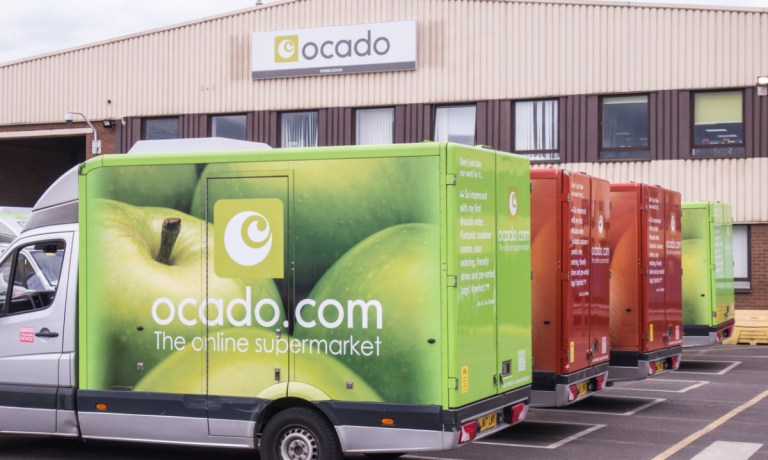Ocado Doubles Down on Robotics as Grocery Delivery Competition Heats Up

As grocers look to drive digital sales while protecting their margins, Ocado is reportedly adding more robotic arms in an effort to boost fulfillment efficiency.
The United Kingdom-based, multinational grocery technology company is soon to increase the number of robotic arms at its Luton facility from 22 to 44, according to the Financial Times, in an effort to accelerate the fulfillment process.
The news comes as grocers seek ways to meet consumers’ demand for speed without losing too much to labor costs. In fact, as Ocado CEO Tim Steiner noted earlier this year, the United States remains behind the U.K. and other comparable markets when it comes to the economics of online grocery.
Kroger, the British eGrocery company’s exclusive partner in the U.S., has been looking to improve on its so-called “sheds,” or automated fulfillment centers, according to the grocer’s Chairman and CEO Rodney McMullen’s comments on the company’s latest earnings call.
Meanwhile, Midwestern grocery chain Hy-Vee, which has 550 locations across eight states, in October announced a partnership with grocery fulfillment solutions provider Takeoff Technologies, leveraging automation to boost the merchant’s direct order fulfillment efficiency, enabling it to offer more “time slots and availability” to eGrocery customers.
Competition remains stiff, with Walmart, the world’s leading grocery retailer, noting double-digit growth in its delivery business in its most recent earnings report, with the service available from more than 4,200 stores in the U.S. The retailer has also been leveraging automated fulfillment centers in an effort to boost delivery margins.
Plus, eCommerce giant Amazon continues to tinker with its grocery business in an effort to gain market share. Last month, the company extended grocery delivery options to non-Prime members, and now it is reportedly looking into a new grocery subscription service that allows Prime members to pay a separate monthly fee for unlimited grocery delivery on certain orders.
In an effort to grow its food and beverage presence, Amazon is also beginning to serve as a player in the third-party grocery delivery space, partnering with Weis Markets to fulfill orders for the grocer.
Still, direct grocery delivery fulfillment is highly costly, and some grocers, rather than stepping up their efforts in the space, are pulling back. For instance, multinational grocery giant Ahold Delhaize has been shuttering delivery fulfillment centers in the U.S., turning its in-house eCommerce focus to less costly pickup orders.
Overall, consumer interest in online grocery is growing. The PYMNTS Intelligence report “Tracking the Digital Payments Takeover: Catching the Coming eCommerce Wave,” created in collaboration with Amazon Web Services (AWS), which drew from an April survey of nearly 2,700 U.S. consumers, revealed that about one in three shoppers said they were very or extremely likely to increase their online grocery purchases in the next year.
Plus, the study “Consumer Interest in an Everyday App,” a PYMNTS Intelligence and PayPal collaboration, drew from a survey of more than 2,200 U.S. consumers. It found that 45% of grocery shoppers purchased these items both by using connected devices and via more traditional means, and another 16% did so exclusively with connected devices.